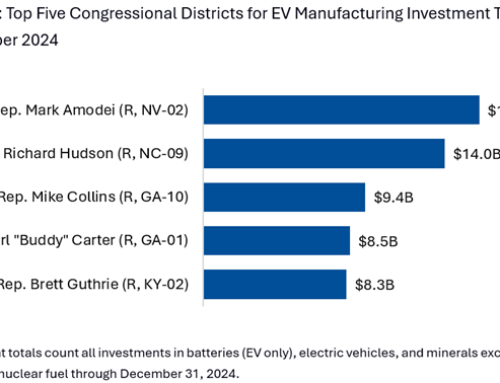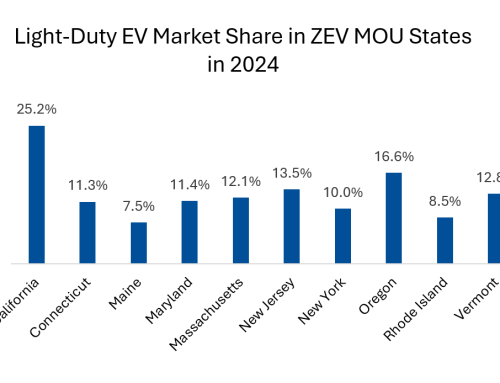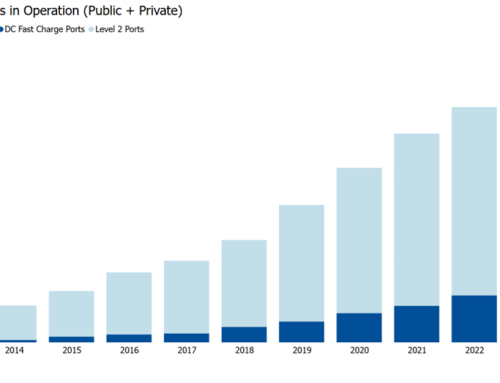Source: Local Government Direct Pay Tracker
Earlier this month, Atlas Public Policy, in partnership with Climate Mayors, C40 Cities, the Sustainable Cities Fund (SCF), and the Urban Sustainability Directors Network (USDN), launched a new resource showcasing how communities across the country are leveraging federal tax credits, including those for electric vehicles (EVs). The Local Government Direct Pay Tracker exhibits how municipalities are leveraging these opportunities to accelerate clean energy projects, particularly by electrifying fleets and installing EV charging infrastructure.
For context, direct pay was created under the Inflation Reduction Act (IRA) and lets tax-exempt organizations, such as local governments, public schools, churches, and nonprofits take advantage of federal clean energy tax credits. For these organizations, this provision unlocks access to a wide range of IRA tax credits, most commonly the Credit for Qualified Commercial Clean Vehicles (45W) and the Alternative Fuel Vehicle Refueling Property Credit (30C), but also credits for clean energy generation like solar and geothermal.
Direct pay makes it significantly easier for local governments to implement clean energy projects. By offering the value of a tax credit as a direct payment, the provision lowers the financial barriers to implementing clean energy investments, helps municipalities meet their climate goals, and creates community co-benefits like local job creation, cost savings, and improved air quality.
However, there is growing uncertainty about the future of direct pay and other key climate provisions. Under new leadership in Washington, direct pay faces the risk of repeal or rollback. Protecting this policy is critical to ensuring that tax-exempt organizations are still able to take advantage of federal tax credits. Continuing to file for direct pay credits, sharing success stories, and demonstrating public support all highlight the value of direct pay, which is important as Congress moves to consider this provision.
Our new Local Government Direct Pay Tracker visualizes the uptake of direct pay-supported projects nationwide. It highlights the many ways in which cities are utilizing these credits to advance clean energy goals. Amplifying these success stories not only demonstrates the real-world impact of direct pay but also serves as an important political defense mechanism. Many of the projects captured in the tracker illustrate how direct pay was a crucial facilitator for these projects to be kickstarted, especially for smaller communities and nonprofits that often lack the upfront capital to invest in clean technologies. By easing financial barriers, direct pay has empowered these communities to pursue climate action that might otherwise have been out of reach.
At the time of its initial launch, the tracker had already captured 44 projects where cities used direct pay to purchase electric fleet vehicles, 10 projects where cities used direct pay to install EV charging infrastructure, and two purchased both. Some city examples include:
-
Bloomington, Indiana: The City of Bloomington utilized direct pay to purchase eight EVs to support city operations. Officials emphasized that electrifying the municipal fleet would help improve community climate resilience, demonstrate leadership in achieving their local climate action plan, and reduce fuel costs, ultimately benefiting taxpayers.
-
Philadelphia, Pennsylvania: Philadelphia leveraged the Commercial Clean Vehicle Credit (45W) to claim over $1 million in tax credits for their purchase of more than 130 battery EVs in 2023. These vehicles are projected to help the city avoid approximately 426 metric tons of greenhouse gas emissions each year, reinforcing Philadelphia’s broader climate commitments.
-
Alexandria, Virginia: Alexandria filed for direct pay to help fund the purchase of 23 EVs and the installation of eight EV charging stations, further supporting the city’s strategy to electrify its fleet and infrastructure.
The Local Government Direct Pay Tracker will continue to be updated as new projects are filed and reported. Know of a project supported by direct pay? Fill out this form. The tracker will soon hopefully include projects from all entities eligible for direct pay.


